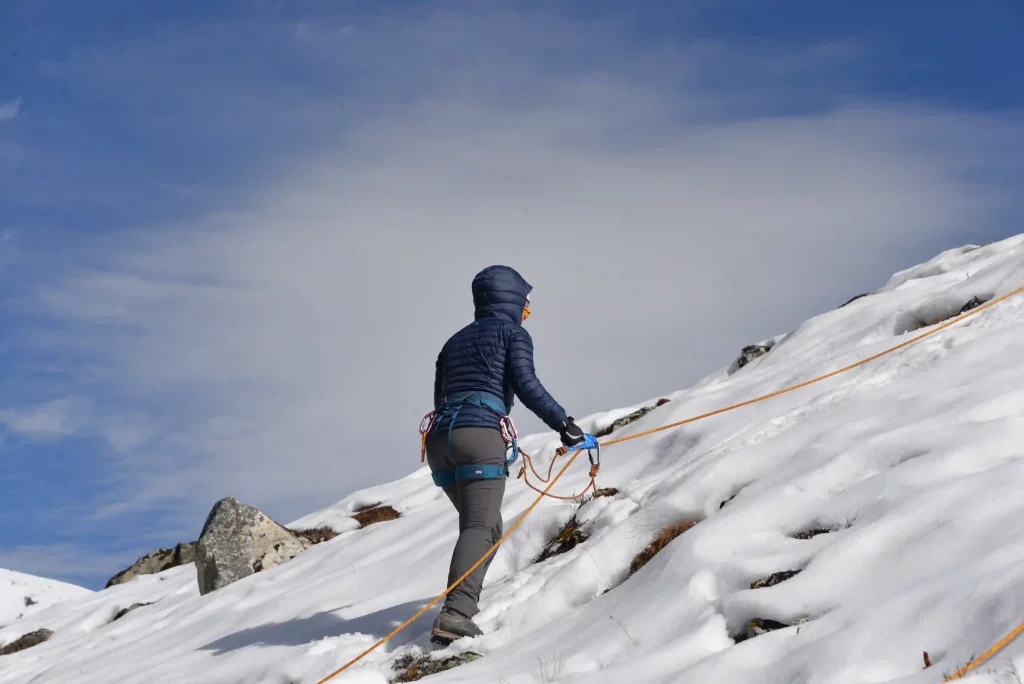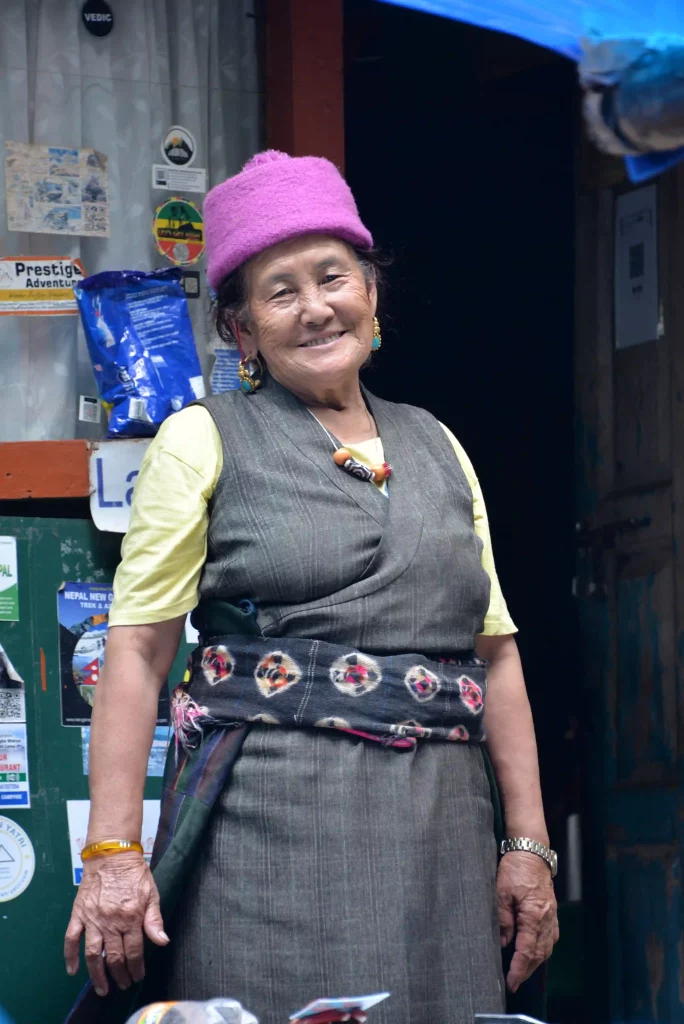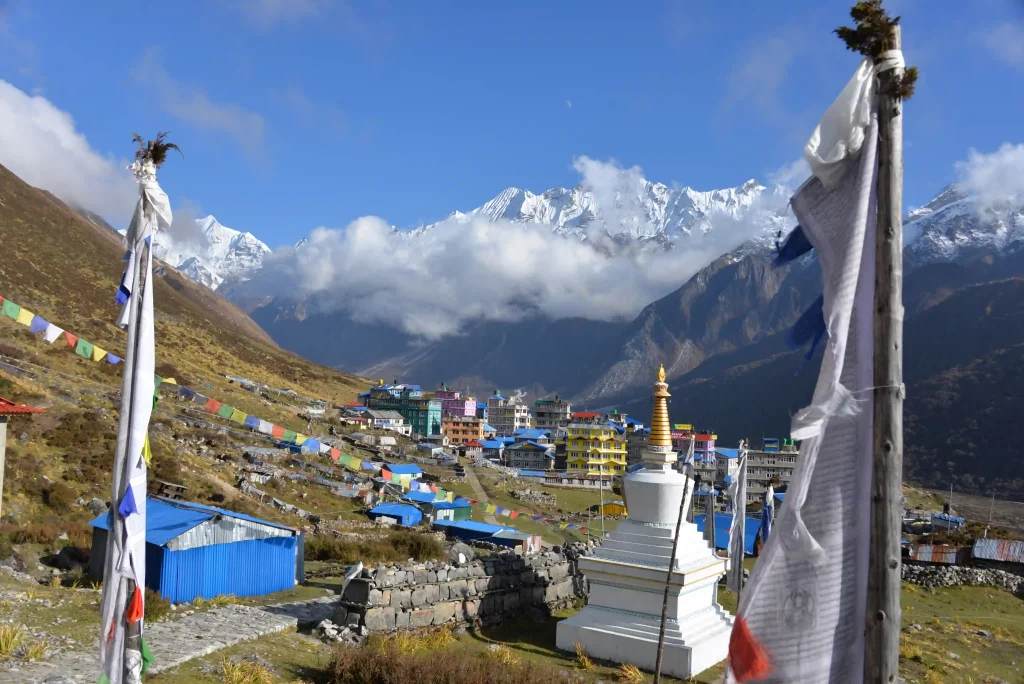A complete 2025 guide to Langtang trek Yala Peak Climbing Guide summit, covering updated costs, and the latest rules. Ensure full compliance for your Langtang region trek.
Overview of the Yala Peak Climbing
The Yala Peak Climbing is a perfect fusion of scenic Himalayan trekking and non-technical peak climbing, ideal for adventurers seeking high-altitude experiences without the extreme demands of technical mountaineering.
Langtang National Park, Nepal’s first Himalayan national park, established in 1976, hosts of rare wildlife, such as the red panda, Himalayan tahr, snow leopard, musk deer, and over 250 bird species.
The Langtang region, nestled in the heart of the central Himalayas just north of Kathmandu, is a breathtaking alpine sanctuary known for its soaring snow-capped peaks, lush forests, and deep-rooted Tamang culture.
The pristine valley offers a quieter, more intimate trekking experience than Nepal’s crowded routes, making it an ideal destination for those seeking natural beauty and cultural depth.
Obtaining a Langtang region trekking permit unlocks the door to a once-in-a-lifetime Himalayan adventure, a true bucket-list experience for outdoor enthusiasts around the world. Yala peak is free peak so you don’t need to have any additional permit to summit this amazing mountaineering experiences.
The Langtang region trekking permit is a mandatory requirement for anyone planning to hike through the Langtang region, including iconic stops such as Syabrubesi, Lama Hotel, Langtang Village, Kyanjin Gompa, and routes leading to Yala Base Camp and Yala Peak.
Don’t miss our detailed Langtang Trek with Yala Peak Day-by-Day Itinerary for a perfect Himalayan alternative filled with cultural richness, glacier views, and an achievable summit.
Permits Needed for Langtang Region Trekking
At present, the two types of permits required for the Langtang region trek are;
Langtang National Park Entry Permit
The Langtang National Park entry fee is mandatory for all trekkers to access the park, a protected area rich in biodiversity, scenic alpine landscapes, and cultural heritage. This permit helps fund conservation efforts and supports sustainable tourism within the region.
You can obtain a Langtang National Park entry permit from:
- Nepal Tourism Board office in Kathmandu
- Park entrance point in Dhunche or Syabru Besi
Langtang National Park entry fee
- Foreign nationals: NPR 3,000 per person, plus 13% VAT
- SAARC nationals: NPR 1,500 per person, plus 13% VAT
- Nepalese: NPR 100 per person
- Children under 10: Free
TIMS Card (Trekkers’ Information Management System)
The TIMS Card is a mandatory permit for all trekkers in Nepal (except in restricted regions) and is used to ensure the safety, security, and proper tracking of trekkers. The TIMS card helps in search and rescue operations in case of emergencies. It also supports sustainable and responsible trekking practices. This also provides data for tourism management and infrastructure planning
You can obtain a TIMS card from:
- Nepal Tourism Board office in Kathmandu or Pokhara
- Registered trekking agencies such as Eagle Trail Escapes
TIMS card fee
- Foreign nationals: NPR 2,000 per person
- SAARC nationals: NPR 1000 per person
- Children under 10: Free
Climbing Permit for Yala Peak
As Yala Peak is an easily accessible expedition, a climbing permit from the Nepal Mountaineering Association (NMA) is not required, as the NMA removed this requirement for peaks below 5,800 m.
While Yala Peak is considered a non-technical climb suitable for beginners, it’s recommended to hire a licensed guide for safety and navigation, especially given the high-altitude conditions.
You can obtain a permit from registered trekking agencies such as Eagle Trail Escapes.

Conclusion
Trekking through the Langtang region and summiting Yala Peak is more than a physical journey as it’s a passage into the soul of the Himalayas. Quiet trails, towering peaks, and vibrant mountain culture blend to create an unforgettable adventure. But every epic journey begins with a first step, and securing the proper permits is one of them.
This trek offers breathtaking views of snow-capped giants, an immersive encounter with warm Tamang and Sherpa communities, and memories that will stay with you for a lifetime. When you trek with a licensed leader, obtaining all necessary permits in advance ensures a smooth, hassle-free experience on the trail.

If you’re ready to take that next step, begin your Langtang trek with Yala Peak summit with us. We’ll handle the logistics, permits, planning, and guiding, so you can focus fully on the experience.
As you shoulder your backpack, lace up your boots, and head into the high Himalayas, carry a deep sense of gratitude for the privilege of walking among some of the world’s most awe-inspiring landscapes. The paperwork may be temporary, but the impact of responsible trekking and climbing will resonate in these valleys for generations.

